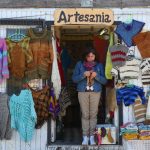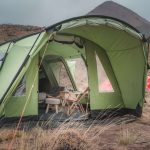Our Vineyard Recommendations for Every Type of Visit
Wine is one of the main attractions for many visitors to Chile, and at Upscape, we’ve spent a lot of time visiting wineries to curate exactly the type of wine experiences our guests want. There are many ways to approach planning winery visits, which include seeking out specific types of wines, such as cool climate reds or coastal whites, or even prize-winning blends. At the same time, guests are refining their tastes for certain varietals, from Chile’s world-famous, lost Bordeaux varietal of Carménère, to the nation’s up-and-coming Uva País (mission grape) wine, served chilled and perfect for the warmer summer months.
But then there are winery visits that, while still having wine as a centerpiece, look at other elements of the winery. Here, without leaving wine behind, visitors prioritize the type of experience they want to have. Not every winery has boutique-winery charm, or has an award-winning tasting room, or is the most secluded, but if these things are important to you, we’ve got you covered. We took the time to talk to the whole team, including management, marketing, sales, operations and our experience designers to get some of their best tips for choosing wineries based on the following non-wine-specific criteria.
Biodynamic
For a biodynamic wine experiences, Paty recommends visiting Viña Antiyal which, she describes as “artisanal wine.” Visiting this winery is a different experience, she says from watching the chickens scratch among the vines, thereby aerating the soil, to talking to the winemaker about how he manages their planting, cutting and harvesting cycles to the phases of the moons, and the special nutritive teas they brew with herbs and minerals to nourish the vines.
Unique Tasting Room
For a unique tasting room, Cris suggests the Almacén de Sauzal, in the Maule region, where fifth generation Sauzal native Renán Cancino Abarza makes traditional, natural wines using old techniques like destemming grapes with a zaranda, a bamboo mat that the grapes are pressed through. Spontaneous fermentation and hand-labeling are only part of the charm of this rustic winery, where Cris says the tasting experience is one-of-a-kind.
Diego and Daniel both really liked the tasting room at Neyén in Colchagua, which is most known for its a Cabernet Sauvignon- Carménère blend. The tasting room, is housed in an adobe building, which is typical of the region. But it is lit from above, illuminated each glass of wine, which concentrates the senses.
To Bike Through
Wine and bikes go well together, and many people who work in the wineries commute from nearby small towns on bikes. We have taken that to heart, and like to combine winery visits with cycling, which can mean riding from winery to winery (link out to piece I wrote about cycling day from Emiliana to Loma Larga, or other), or cycling within a single property. For the latter, Diego loves the valley at Matetic, another family-owned biodynamic winery, which he says is huge, and has a trail that runs around and through the vineyards. This experience is particularly beautiful close to (but not during) harvest, when the vines heavy with nearly ripe grapes. The winery is extensive, with vineyards in the Casablanca and San Antonio Valleys.
Boutique Winery Experience
We visit many boutique wineries, but there are some standouts, according to the Upscape team. Diego recommends Catrala in Casablanca where the winery is surrounded by native forests, and abuts a nature reserve, so you can often see rabbits and foxes bounding through. Tastings are held outside in a clearing among the trees.
Jess loves Loma Larga, which has a little bit of everything, from walks through the rose gardens to a picnic lunch to tastings in a pretty, comfortable, cozy free-standing house. They make cool climate reds, and the winery is named for the long hill on which it is situated.
Daniel chooses La Recova for a boutique experience. This Casablanca winery is situated in the Quebrada del Pulgar (a small canyon) has tightly packed Sauvignon Blanc vines on a steep hillside, and is attended by David Giacomini, a Brazilian transplant (link to MOVI video?) to this valley.
Most Secluded
Several team members also liked La Recova (see above) for their most secluded winery, as it’s well off the beaten path in Casablanca, and tastings are held up above the winery in a shaded area. Paty also likes Viña Vik for seclusion. This design-forward winery in Colchagua is known for its unusual architecture, extensive art collection, and of course, its high-performing blends. The winery is cooled with a water feature that is half fountain, half zen-garden, the rocks representing the nearby Andean peaks. But then there’s also family-run Bouchón, in a classic colonial private home where overnight guests stay in simple, elegant surroundings and gather around the fireplace in the lounge on chilly nights.
Romantic
For romantic wineries, you’ll see some repeats from above, like Jess’ pick, which is Bouchón, out in the country, with horseback riding and a giant barrel-shaped hot tub for overnight guests. Diego likes the tasting and picnic at Loma Larga in the gardens for a romantic stop in the Casablanca Valley, though as the team points out, pretty much anywhere can be romantic if you’re in the right company.
Historical
The history of winemaking in Chile is extensive, dating back hundreds of years, though wine tourism is a relatively new development. For wineries with the most historical impact, several team members recommend hacienda-like Santa Rita, with its large yellow mansion hotel. Their wine 120 is named for the 120 Chilean soldiers (including Bernardo O’Higgins, considered the liberator of Chile) who sought refuge there during the independence process from Spain. At this winery there is also an extensive museum (Museo Andino) which showcases cultural items from all around Chile, including many from Easter Island and the Mapuche culture.
Jess is a fan of Casa Silva for historical wineries in Chile. Casa Silva dates back to 1892, and also has a hotel, restaurant and polo fields (which are in use at some times of the year). Casa Silva is located in Colchagua, with vines in several different sub-climates, including those cooled by the Pacific breezes, and those in the Andean foothills.
Elegance
For elegance, many of our team suggested Lapostolle, with its exclusive villas for overnight stays. Even those who come just for the day can appreciate the refined architecture, including that of the winery, has been likened in appearance to a barrel or the ribcage of a whale, depending on how you look at it. Visits include a visit to the owner’s private wine room, and the winery is built into the mountain, so guests can take a peek into the terroir that the winemakers hope to express in their high-performing wines.
Top Views
If for many of the above topics, team members were generally in agreement, they had a lot of different ideas for the winery with the top view. Daniel chooses Viña Hacienda Araucano in the Colchagua valley for the bar/table overlooking the windows for a great view of the sunset. It doesn’t hurt that this is another sustainability-focused biodynamic winery. Cris, on the other hand, chooses Altair in the valley of Alto Cachapoal in the foothills of the Andes for his best winery sunset. A few more team members think the vantage point from Gonzalez Bastias—where you can see the broad Maule River that is so important to this area’s agriculture—has one of the best views. For a decidedly less rustic experience and the more urban-inclined, team members Cris and Diego say Aquitania, located in the Santiago neighborhood of Peñalolén, has an unbeatable view over the city.
There are many ways to choose the best winery for each visit to Chilean wine country. These are just some of our highlights, and we’ll be back soon to give you some more.

